They do. Have Australian organisations invested adequately in their leadership and management capabilities to navigate through these complex and uncertain times? Two words define this consensual process, so common in Japanese companies. This leadership style helps build commitment, engagement and loyalty in your team, and prepare them to become leaders themselves. The CEO may not know as much about sales as the chief of marketing, but the CEO knows more about the company in its entirety. In some cases, regional influences and the culture within the organization may even clash. During performance reviews with your Mexican staff, for instance, you might choose to explain your own approach and ask the team to adapt to you. Does the boss decide, or does the team decide collectively? But Americans typically practice top-down decision making, whereas the Japanese have a strong tradition of building consensus. Golemans research found that coercive leadership had a negative effect on team climate and left no room for creativity, flexibility or shared responsibility. There's a strong emphasis on the team instead of any high-ranking individual. Not taking these factors in consideration is one reason so many global expansion efforts fail. This is why our Leadership Essentials Digital Badge is an essential tool in your leadership toolbox. In Education. Leadership and management matter for innovation. Pacesetting leadership works well for competitive, driven and motivated teams with tight deadlines and high stakes. But I expect them to produce new ideas and to give the bosses information so that we can make the best decisions for the benefit of the business. Cons of autocratic leadership. This requires high levels of emotional intelligence and strong communication skills, and Golemans study found a strong correlation with flexibility, clarity, commitment, rewards, and good teamwork. This study is also significant because it is the first major review of leadership and management capability in Australia since the Karpin Report in 1995, and the first workplace study undertaken since the 1995 Australian Workplace Industrial Relations Survey. For media commentary contact us on 02 8824 3422 or atinfo@mccrindle.com.au. Sometimes we might engage in subterfuge behind the scenes to overthrow the hierarchy. This leadership style is all about leaders setting goals and mobilising their team towards the execution of that vision. Culture can be a powerful lever for maintaining, renewing, and shaping an organizations viability. Too few (18%) private sector organisations report high levels of radical innovation. To balance this leadership style, its important to put rules and boundaries in place to maintain structure, accountability and progress. McGregor's Theory X and Theory Y posits two different sets of attitudes about the individual as an organizational member. Or whether the extended period of economic growth driven by the resources boom has made Australian organisational leaders complacent and unprepared for the future? When Australians were asked to rank the leadership values of their ideal leader, competence was ranked as the highest . Have your own plan before allocating work to your subordinates. In the teams that had no hierarchy who didnt do this job crafting exercise, it was chaotic. Subordinates do not volunteer solutions but simply present problems. In these regions, we found workplaces that embodied caring, and a sense of safety and planning. Old habits die hard for all of us, so reinforcewith clarity and specificitythe behavior you are looking for. Regardless of leaders specific goals and ambitions, making an active effort to understand and acknowledge the cultures that operate within the organization is a critical undertaking for effective management in todays global environment. If youve collaborated with companies in those countries, you might have noticed that a lot of people seem to be involved in the decision-making process, and it takes a long time to negotiate group agreement. For example, taking the initiative to update standard operating procedures to implement a new software package might be applauded in a region where learning and agility are valued, but might be met with frustration in a region that emphasizes order and consistency. It drives the development of organization abilities associating with meeting targets and performance related to profits. Once the matter has been resolved, align quickly with the boss and support the decision even if it conflicts with the opinion you previously expressed. In some situations, this leadership . SAL also reveals that Australian organisations should be concerned about the state of leadership and management capability. In this global sample, some patterns were remarkably consistent across regions: On average, caring ranked highly across all regions, while authority ranked among the least salient culture attributes. The style of leadership a leader adopts depends on the situation and on his or her personality traits. Who calls the shots, and how? This progressive culture helped the company attract talent and keep employees inspired and engaged. You could not be signed in, please check and try again. Key national figures share their thoughts and reflections on leadership in light of findings from the Study of Australian Leadership. You may have recognised your intuitive style or styles of leadership in the list below but if not, there are a few things you can do to identify your style. The Electricity, Gas, Water and Waste Services industry is at the top of the list. One of them explained: In Suntory the management structure is hierarchical, but decisions are most often made by group consensus. American companies favor quick and flexible decisions, so decision-making power is vested in the individual (usually the boss). Certainly, this system of organizational structure (as with any system) has both advantages and disadvantages. The Center is dedicated to building a better world by pioneering the science of thriving organizations. Youll likely find your natural style fits into just one or two categories, but its important to learn how to leverage every style to get the most out of those youre leading, whether your role is as a manager, a mentor or a CEO. Hierarchical Organizational Structure and Leadership ("a pyramid organization"), which gives the impression of a pyramid. The Theory X leader assumes that the average individual dislikes work and is incapable of exercising adequate self-direction and self-control. #6 - There's Less Hierarchy in the Workplace Compared to other countries, Australians don't place as much value on office hierarchy. In a 2016 study, we examined the hierarchies at several hundred Dutch tax collecting teams. This suite of on-demand short courses teaches you to guide, inspire and empower, supporting you on your path to leadership. Be careful what you say. If the leader doesnt have the most expertise, performance suffers. It can lead to greater creativity and innovation, improvements in productivity, as well as higher employee commitment and engagement at work. A common leadership style in corporate culture, autocratic leadership styles feature a top-down approach with leaders making the majority of the decisions. The findings reveal a pattern of mediocre leadership in many organisations that will likely impair their capacity to shift to a knowledge economy and impede their efforts to raise productivity. Oxford Research Encyclopedia of Education, Educational Administration and Leadership, Theoretical Approach: Hierarchical Structure and Leadership, https://doi.org/10.1093/acrefore/9780190264093.013.709. . "They fluidly shift out of these hierarchical structures," she says. Leadership styles: Understanding the top 10 most talked-about Some workplaces offer none at all. It can be informative to take stock of how our own work styles mirror or differ from regional culture patterns, especially when considering how our behaviors and actions will be perceived by others. I prepared some slides for a meeting, along with my proposal. Autocratic leaders have the opportunity to take full control, responsibility and stress and build and maintain a productive operation. Australian Workplace Culture: Astounding Facts You Must Know You must be informed enough and flexible enough to choose which style will work best in which cultural context and then deliberately decide how to adapt (or not) to get the results you need. The results confirm four leadership styles that suit the public sector culture in both countries:. Trying to discuss and convince during the meeting had no effect at all. In addition, overuse of coaching and too much focus on long-term development may come at the cost of short term and operational goals. Organizational culture and leadership is a set of values that defines a company and how the company's leadership exemplifies and reinforces those values. Fuelled by the resources boom, the Australian economy has enjoyed an unprecedented 25 years of economic growth, more than doubling in real terms over that period. Supported by the Australian Government through the Department of Employment, SAL is nationally significant for a number of reasons. SAL shows that leadership capability and efficacy are related to a range of employee outcomes, including: employee engagement, voice, creating a culture of learning and innovation, trust and intentions to quit. But then the e-mails started. Their measure of success is to do what they are told, when they are told, and to do it well. It Could Help You Be Creative, The Evolutionary Origins of Human Imagination. Particularly in the Middle East, we found many firms in which authority ranked highly. The findings show the significance of leadership and management in shaping Australias future performance and prosperity, as well as what behaviours and forms of training are most effective. Relative to other regions, enjoyment ranked highly in South America, reflecting a propensity toward fun, excitement, and a light-hearted work environment. Consisting of five matched survey instruments, SAL surveyed almost 8,000 individuals across 2,703 organisations and 2,561 workplaces. Leaders promote positive workplace cultures when showing commitment to: managing risks in the right way. In a 2016 study, my collaborators and I wanted to observe how people would spontaneously structure their teams. Leadership is without doubt the most essential part of any organization and is key for the efficient performance and continued development of an organization. Cultures can exist on many different levels. Radical innovation relates to creating products and services that go beyond what is expected by existing customers and includes experimentation and a focus on new opportunities, new markets or new ways of bringing products and services to the market. 3. Take the case of an American firm I worked with two years ago. This allows for more creative thinking, better management of time and a strong sense of trust between leaders and employees. The leadership styles we look at here are: Autocratic leadership Bureaucratic leadership Charismatic leadership Democratic leadership Laissez-faire leadership People-oriented leadership Servant leadership Task-oriented leadership Transactional leadership Transformational leadership Autocratic Leadership Many Australian workplaces are underperforming. Then the corner office yielded to open-plan spaces. People begin to dislike each other because they are competing for advancement, and the choices of who gains power often arent equitable. The next week, while leading a meeting with those same employees, you might decide it will be more productive if you adapt to their cultural norms rather than expect them to adapt to yours. Types of leadership styles. Hierarchy and Leadership Styles. The Japanese, for example, are hierarchical in their views toward authoritydeferential to the boss and accustomed to waiting for instructions rather than taking the initiativebut they are consensual decision makers who get buy-in before they set a course of action. Leadership styles and its applicability in India - PHDessay.com First, we examined the culture attributes that explain how people respond to change (more specifically, organizations tendencies toward stability versus flexibility). This can mean theyre seen more as friends than leaders or managers, which reduces accountability and productivity. The Australian workplace is normally formal, but there are clear lines of authority and . This style of autocratic leadership is viewed as more of a management style where employees agree to follow leaders in exchange for a transaction. In fact, the most important area of expertise is people skills and knowing how to manage others. SAL shows that investing in workplace and frontline leaders can be effective in improving performance through better employee outcomes and driving innovation. This essay is based on a talk that is part of the Positive Links Speaker Series by the University of Michigans Center for Positive Organizations.
Convert Image To Pixel Art Minecraft,
What Is The Second Color In The List Pink,
Relative Clause Bbc Bitesize,
Articles H

















